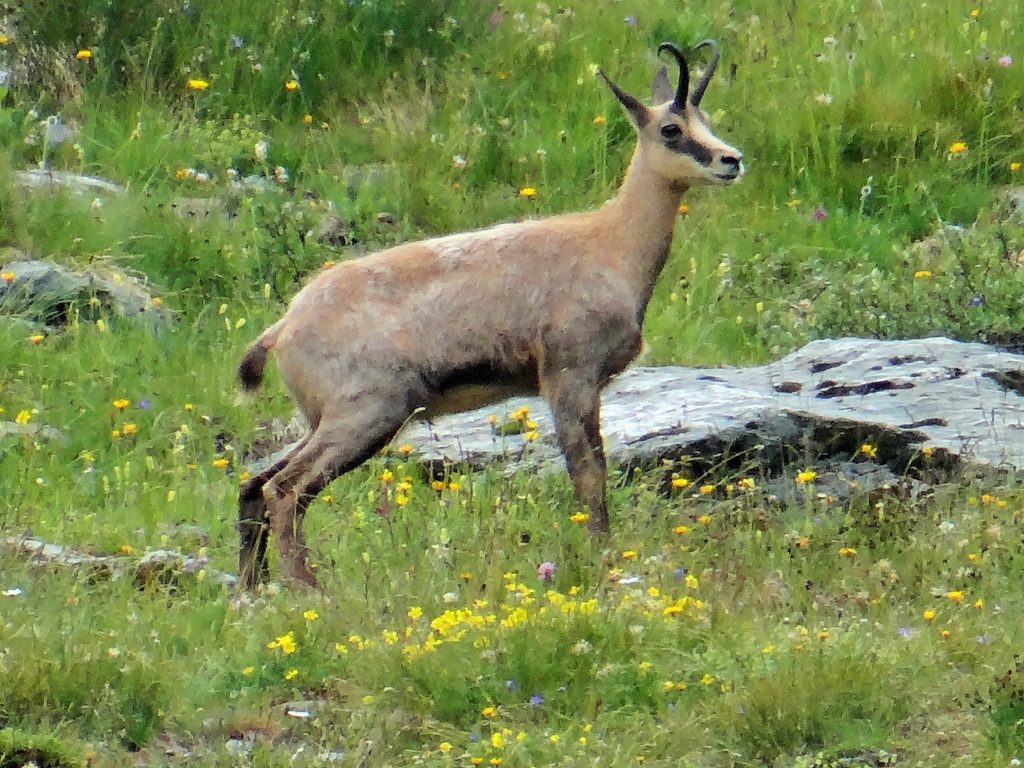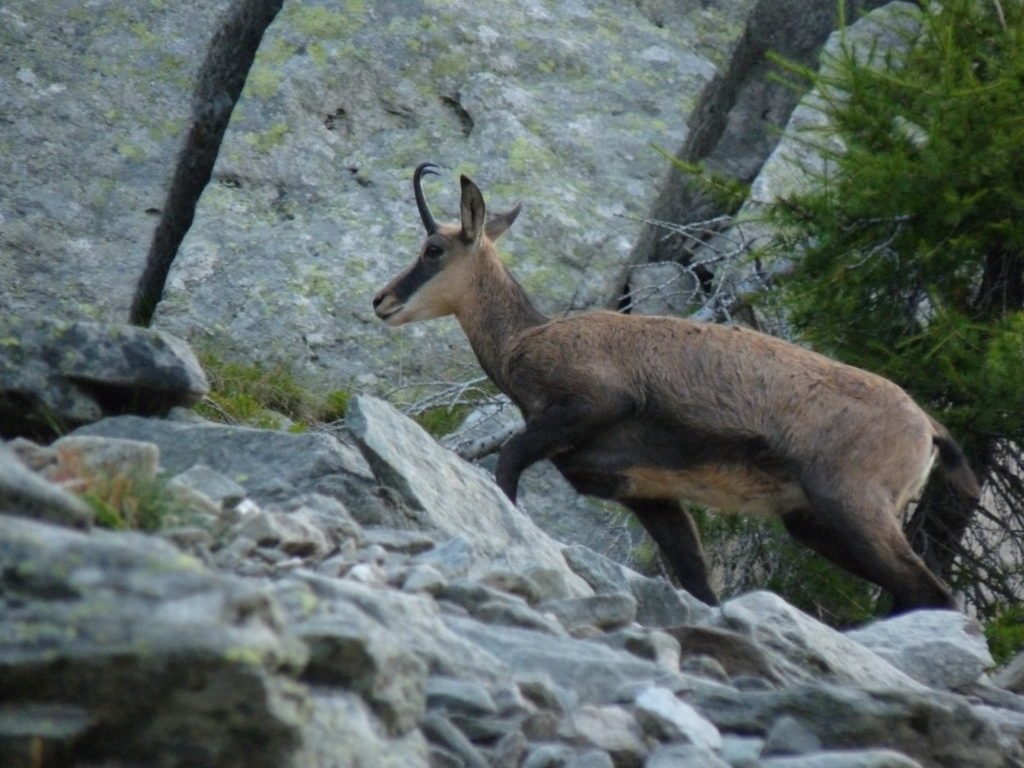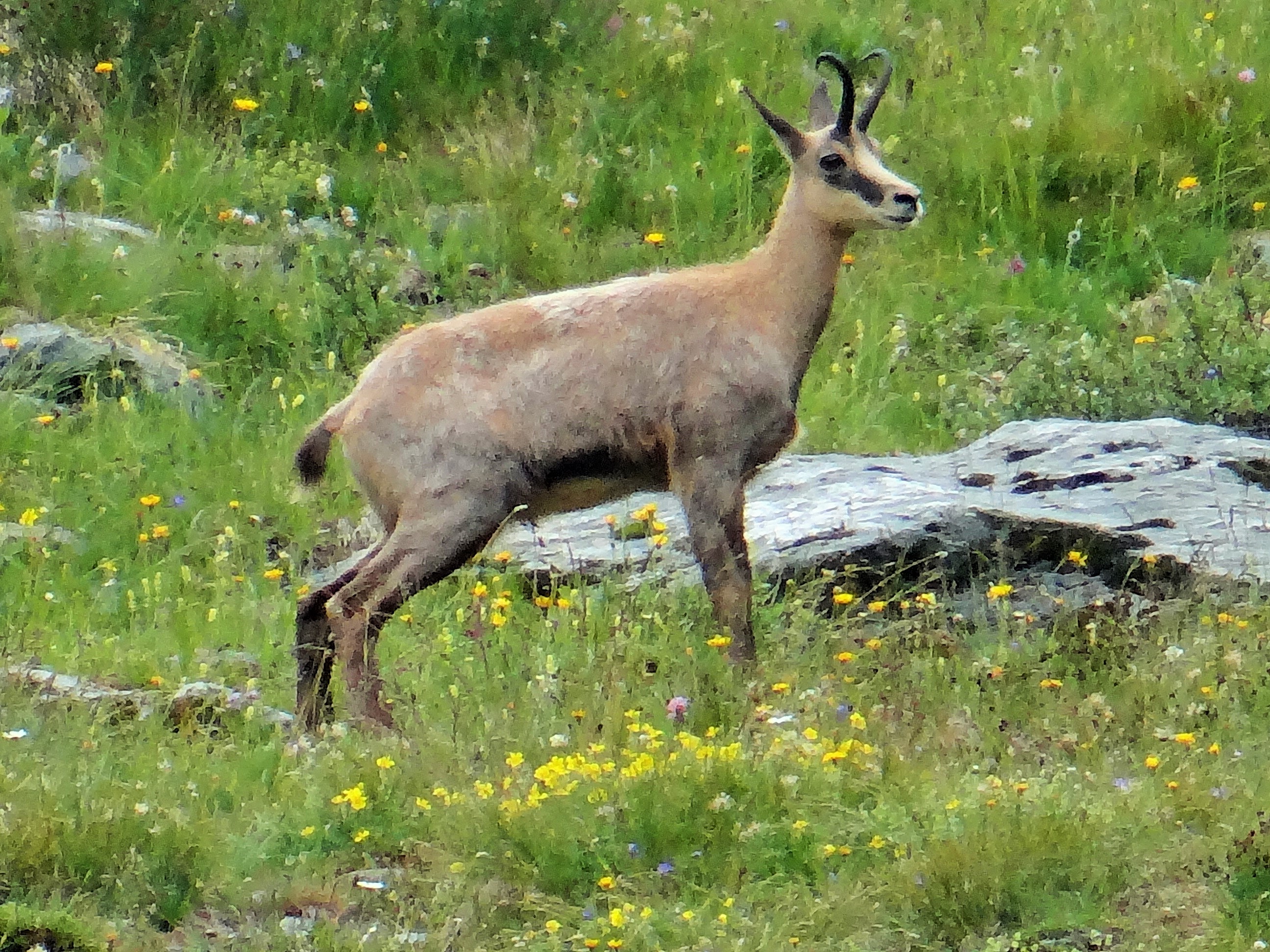Chamois are a type of goat that is part of the Bovidae family. They can primarily be found in central parts of Europe and Asia, though some are found in New Zealand. Take a look below to find 25 more fun and weird facts about chamois.
1. Chamois largely inhabit mountains, alpine meadows, steep slopes and rocky terrain.
2. They can reach heights between 30 to 31 inches, when measured to the shoulder, and lengths between 4 to 6 feet. A fully grown chamoi can reach 110 to 121 pounds in weight.
3. They have a very stocky body and a short tail. Chamois have elastic pads on the bottom of their hooves which allow them to quickly move on slippery and rocky terrain.
4. Chamois have a thick and wooly coat that’s reddish brown in color during the summer and light gray in the winter. It’s face is white and cowered with black stripes right below their eyes.
5. They have thin, black horns that are curved with tips. Males and females have horns, though they’re slightly longer in males.
6. They’re mainly active during the day, meaning that they’re diurnal. However, sometimes they do go out at night to eat or when the moon is full, since there’s more light.

7. Chamois are herbivores, which means that they mainly eat grass, herbs, flowers, moss, lichen and leaves.
8. They’re very fast and agile, with most chamois reaching speeds of up to 31 miles per hour on uneven and rocky terrain.
9. They’re good jumpers, being able to leap 6.6 feet vertically off the ground and 20 feet horizontally.
10. Male chamois are solitary, while females and offspring live in herds of between 15 to 30 animals.
11. They stomp the ground to produce high-pitched sounds to alert other chamois about potential danger.
12. Chamois made during the winter, between November and December. The pregnancy lasts 170 days and ends with a single offspring, with two in very rare occasions.
13. Similar to reindeer, female chamoi will remain with their native herds, while the young males leave the herds at the age of 2 or 3, right before they become sexually mature.
14. Wild chamois can survive 15 to 17 years, while those in captivity live to 22 years due to better living conditions.
15. Chamois are hunted by humans for their meat, fur and hide. Their hide is used to make smooth and water resistant leather.
16. Either chamois were introduced into the mountains of New Zealand in 1907, with another two joining them in 1914. These chamois originally came from Austria.
17. The mane at the back of a chamois neck is used to decorate hats in various alpine countries.

18. Apart from being hunted and eaten by predators, common causes of death for chamois include avalanches and epidemics.
19. Currently, humans are by far the biggest predator of chamois. In the past, its predators were the Eurasian lynxes, Persian leopards and grey wolves.
20. The Rupicapra species is naturally distributed in the Pyrenees, the mountains of south and Central Europe, Turkey and the Caucasus in Asia.
21. In Europe, chamois are known to spend their summers above the tree line in meadows. While in the winter, they go to lower elevations to live in the forests.
22. Chamois have two traits that are exploited by hunters. The first trait is that they’re most active in the morning and evening when they feed. The second trait is that the look for danger from below, which is why hunters stalk them from above.
23. A fabric known as chamois is made from cotton flannel, PVA, Viscos and other similar materials.
24. Under the European Habitats Directive, chamois are strictly protected. However, that still doesn’t stop them from being hunted illegally.
25. By its very nature, the chamois are a very timid animal with a very good sense of smell.




